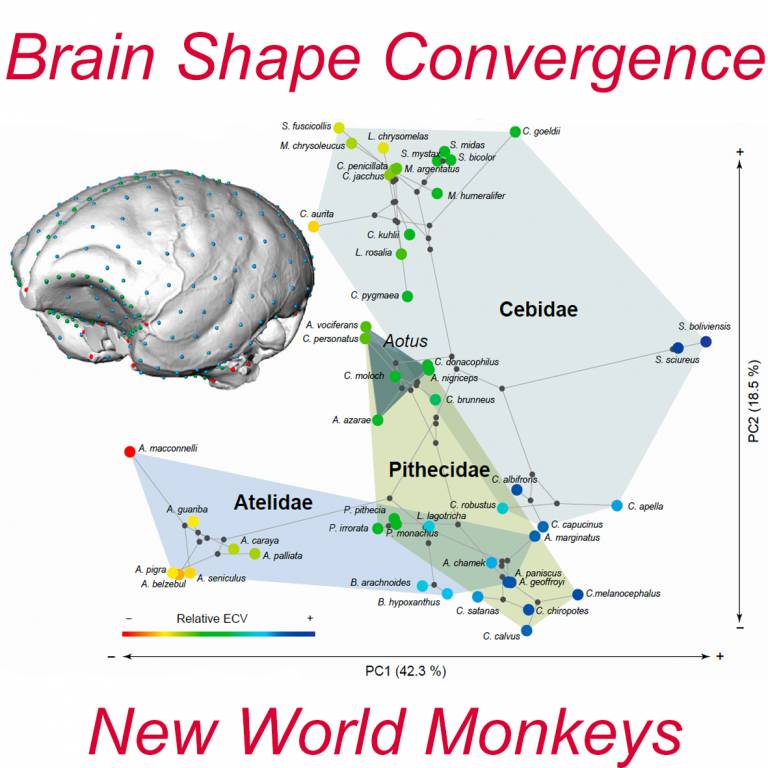Study highlights complexities in New World Monkey brain evolution
29 February 2016
Primates constitute one of the most diverse mammalian clades, and a notable feature of their diversification is the evolution of brain morphology.
 However, the evolutionary processes and
ecological factors behind these changes are largely unknown.
However, the evolutionary processes and
ecological factors behind these changes are largely unknown.
In this work, brain shape diversification of New World monkeys was investigated, during their adaptive radiation in relation to different ecological dimensions. The team's results reveal that brain diversification in this clade can be explained by invoking a model of adaptive peak shifts to unique and shared optima, defined by a multidimensional ecological niche hypothesis. Particularly, they show that the evolution of convergent brain phenotypes may be related to ecological factors associated with group size (e.g., social complexity). Together, their results highlight the complexity of brain evolution and the ecological significance of brain shape changes during the evolutionary diversification of a primate clade.
Brain shape convergence in the adaptive radiation of New World monkeys
Leandro Aristide, Sergio Furtado dos Reis, Alessandra C. Machado, Inaya Lima, Ricardo T. Lopes, and S. Ivan Perez
 Close
Close

